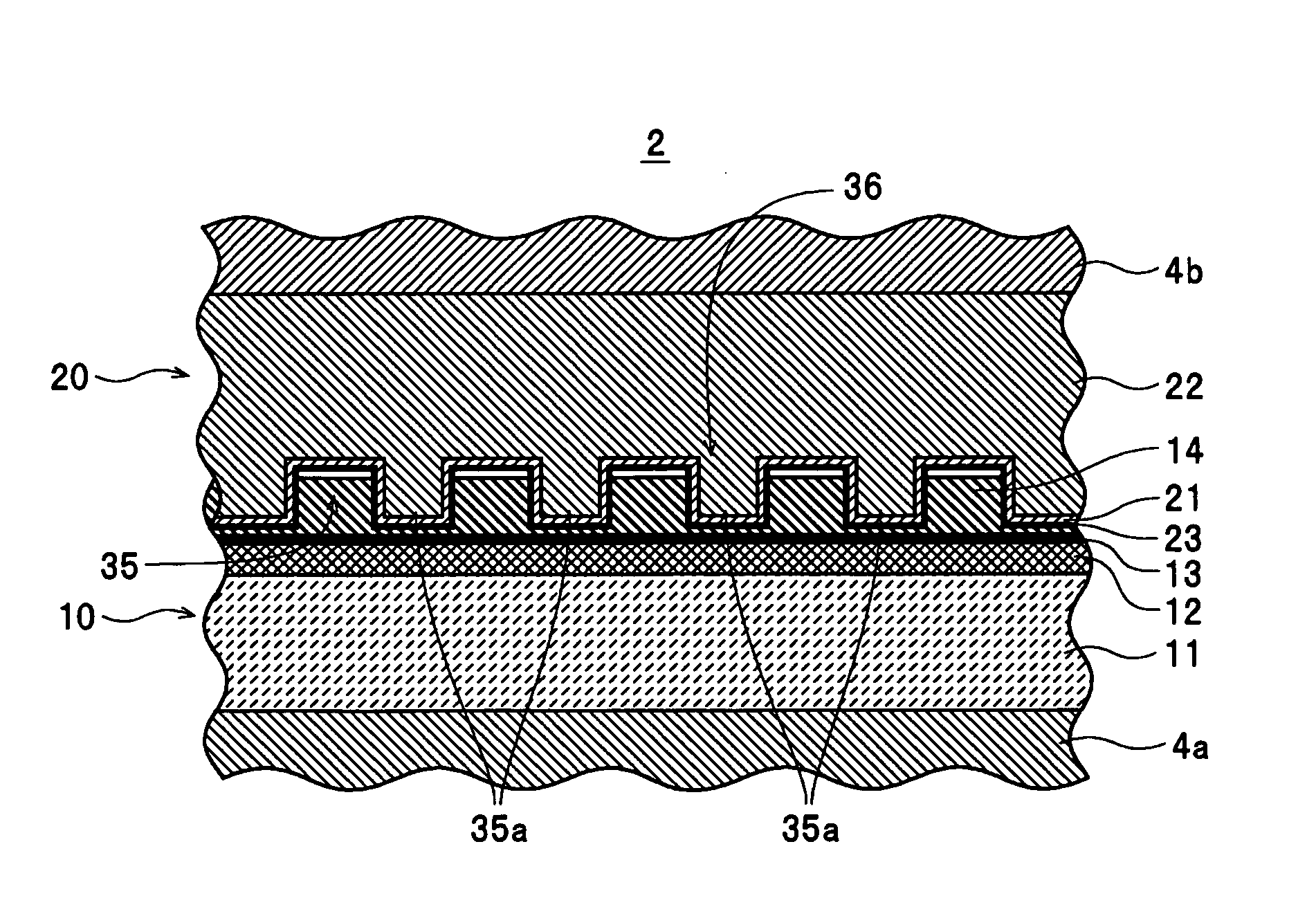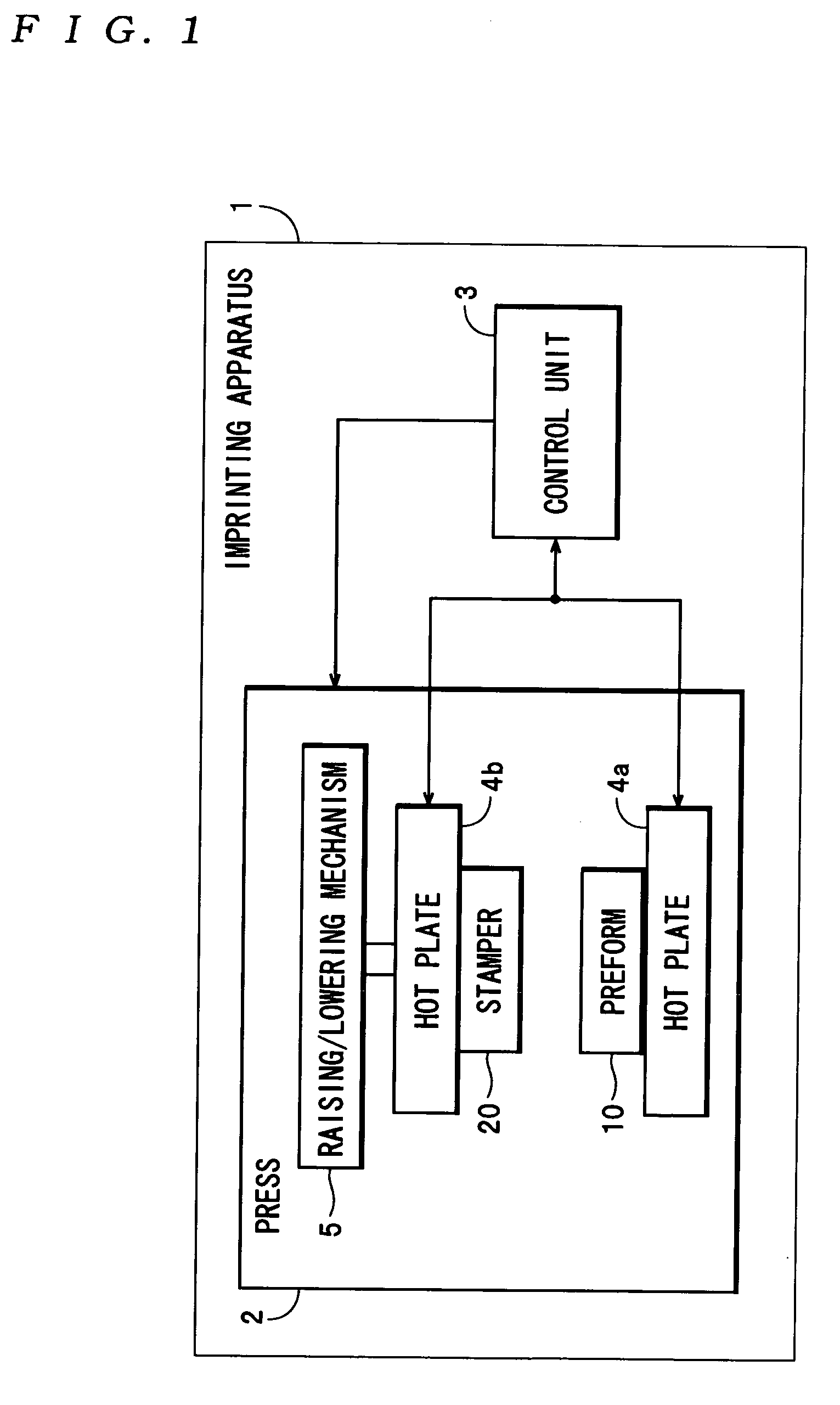Stamper, imprinting method, and method of manufacturing an information recording medium
a technology of information recording medium and imprinting method, which is applied in the direction of manufacturing tools, photomechanical equipment, instruments, etc., can solve the problems of difficult to make the width of concave parts, difficult to press the positions where features are placed, and resin layer, so as to avoid corrosion of the side surfaces
- Summary
- Abstract
- Description
- Claims
- Application Information
AI Technical Summary
Benefits of technology
Problems solved by technology
Method used
Image
Examples
Embodiment Construction
[0040] Preferred embodiments of a stamper, an imprinting method, and a method of manufacturing an information recording medium will now be described with reference to the attached drawings.
[0041] First, the construction of an imprinting apparatus 1 that manufactures an information recording medium using a stamper according to the present invention will now be described with reference to the attached drawings.
[0042] The imprinting apparatus 1 shown in FIG. 1 is a device that presses a stamper 20 (see FIG. 3) onto a preform 10 (see FIG. 2) using an imprinting method according to the present invention to form a concave / convex pattern 36 (see FIG. 17) when manufacturing an information recording medium 40 shown in FIG. 19, and includes a press 2 and a control unit 3. In this example, the information recording medium 40 is a discrete track magnetic recording medium on which a concave / convex pattern 38 is formed as shown in FIG. 19. The concave / convex pattern 38 is composed of a large nu...
PUM
| Property | Measurement | Unit |
|---|---|---|
| Width | aaaaa | aaaaa |
| Width | aaaaa | aaaaa |
| Distance | aaaaa | aaaaa |
Abstract
Description
Claims
Application Information
 Login to View More
Login to View More - R&D
- Intellectual Property
- Life Sciences
- Materials
- Tech Scout
- Unparalleled Data Quality
- Higher Quality Content
- 60% Fewer Hallucinations
Browse by: Latest US Patents, China's latest patents, Technical Efficacy Thesaurus, Application Domain, Technology Topic, Popular Technical Reports.
© 2025 PatSnap. All rights reserved.Legal|Privacy policy|Modern Slavery Act Transparency Statement|Sitemap|About US| Contact US: help@patsnap.com



